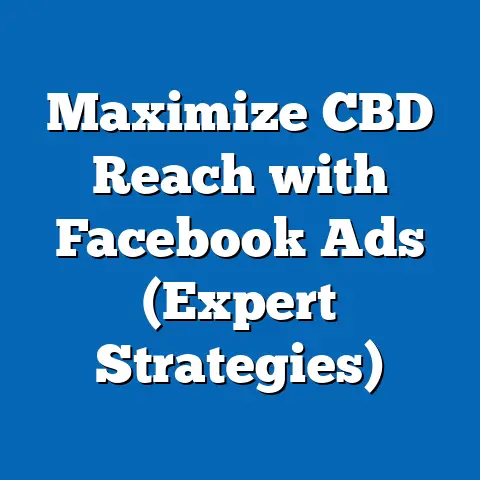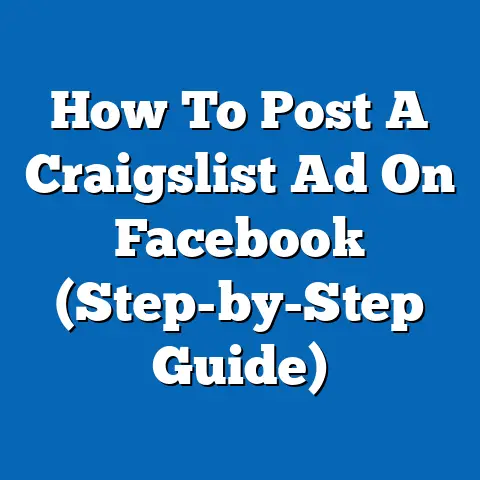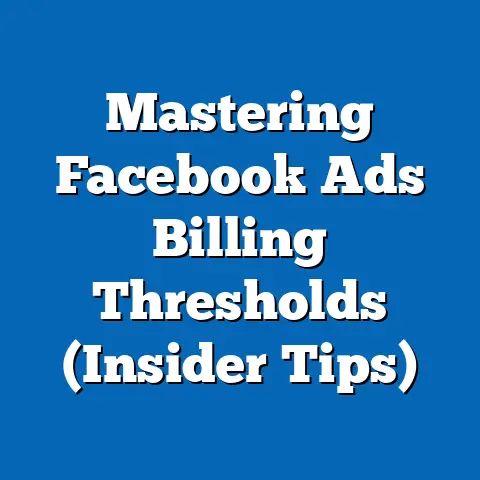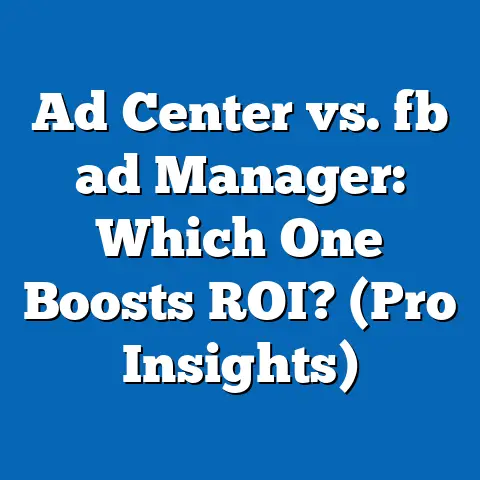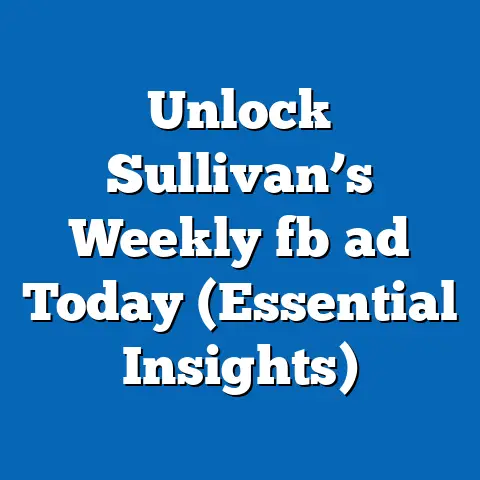Cut Facebook Ad Costs Today (Smart Budgeting Strategies)
In 2023, Facebook advertising remains a cornerstone of digital marketing, with over 2.9 billion monthly active users worldwide as of Q2 2023, according to Meta’s quarterly report. Yet, the cost of advertising on the platform has surged, with the average cost-per-click (CPC) increasing by 17% year-over-year to $0.97 in 2022, per data from WordStream’s annual report. For businesses, particularly small and medium-sized enterprises (SMEs), this escalating cost poses a significant challenge to achieving a positive return on investment (ROI).
Why are these costs climbing, and who is feeling the pinch the most? This comprehensive report dives into the dynamics of Facebook ad spending, dissecting trends, demographic impacts, and actionable budgeting strategies to help marketers cut costs without sacrificing reach or engagement. Drawing from recent studies, platform data, and industry surveys, we’ll uncover how to navigate this competitive landscape with precision.
Our analysis is grounded in data from multiple sources, including a 2023 survey of 1,500 digital marketers conducted by AdEspresso (fielded between January and March 2023), Meta’s advertising transparency tools, and third-party analytics from Statista and eMarketer. We’ll explore how ad costs vary across demographics, industries, and regions, while highlighting smart budgeting tactics that have proven effective. By the end, you’ll have a clear roadmap to optimize your Facebook ad spend in today’s high-stakes environment.
Section 1: The Big Picture – Trends in Facebook Advertising Costs
1.1 Escalating Costs: A Global Perspective
Facebook ad costs have been on an upward trajectory for the past five years, driven by increased competition, platform algorithm changes, and shifts in user behavior following privacy updates like Apple’s iOS 14.5 tracking restrictions in 2021. According to eMarketer, the average cost-per-mille (CPM) on Facebook rose to $11.20 in 2022, a 14% increase from $9.82 in 2021. This trend shows no signs of slowing, as advertisers in Q1 2023 reported a further 9% CPM increase to $12.21.
The United States remains one of the most expensive markets for Facebook ads, with an average CPC of $1.21 in 2022, compared to $0.44 in emerging markets like India, per WordStream data. This disparity reflects differences in purchasing power, audience saturation, and advertiser density. Meanwhile, industries such as finance and insurance face the highest CPCs at $3.77, while retail averages a more manageable $0.70, highlighting the role of sector-specific competition.
1.2 Impact of Privacy Changes and Platform Updates
Apple’s App Tracking Transparency (ATT) framework, rolled out in 2021, has fundamentally altered how advertisers target users, with Meta estimating a $10 billion revenue loss in 2022 due to reduced ad effectiveness. A 2023 report by AppsFlyer found that 62% of iOS users opt out of tracking, limiting advertisers’ ability to deliver personalized ads and driving up costs as targeting becomes less precise. This has pushed marketers to rely on broader audience segments, often resulting in higher CPMs and lower conversion rates.
Additionally, Meta’s ongoing algorithm updates prioritize user engagement over ad exposure, meaning businesses must invest more in creative content to maintain visibility. A 2023 study by Socialinsider found that organic reach for business pages dropped to an all-time low of 2.2% in 2022, down from 5.2% in 2019. This decline forces brands to allocate larger budgets to paid ads just to maintain baseline visibility.
1.3 Year-Over-Year Growth in Ad Spend
Despite rising costs, global ad spend on Facebook continues to grow, reaching $131.4 billion in 2022, a 12% increase from $117.2 billion in 2021, according to Statista. This growth is fueled by the platform’s unparalleled reach and advanced targeting tools, even as advertisers grapple with diminishing returns. Notably, SMEs, which account for 70% of Facebook advertisers per Meta’s 2023 data, are increasing spend at a faster rate (15% YoY) compared to large enterprises (9% YoY), reflecting their reliance on the platform for customer acquisition.
Section 2: Demographic Breakdown of Facebook Ad Costs and Usage
2.1 Age-Based Cost Variations
Facebook’s user base spans generations, but ad costs and engagement vary significantly by age group. According to a 2023 AdEspresso analysis, targeting users aged 18-24 yields the lowest CPC at $0.82, likely due to high competition for this demographic’s attention and lower purchasing intent. In contrast, targeting users aged 45-54 results in a higher CPC of $1.35, reflecting their greater disposable income and conversion potential, particularly for high-ticket items.
Engagement rates also differ, with users aged 25-34 showing the highest click-through rate (CTR) at 2.1%, compared to 1.3% for those over 55, per Socialbakers’ 2023 report. Marketers targeting younger audiences must contend with lower costs but higher ad fatigue, while older demographics offer better ROI at a premium price point.
2.2 Gender-Based Targeting Insights
Gender-based targeting reveals nuanced cost differences. In 2022, targeting women on Facebook averaged a CPC of $0.92, slightly lower than the $1.02 for men, according to WordStream. This gap is attributed to women’s higher engagement with lifestyle, fashion, and health-related ads, which often see lower competition compared to tech or automotive sectors targeting men.
However, conversion rates for women are 11% higher than for men across most industries, per a 2023 study by Hootsuite, suggesting that the lower CPC does not equate to lower value. Marketers should weigh these factors when allocating budgets, as gender-specific campaigns can yield significant cost savings with tailored messaging.
2.3 Racial and Ethnic Audience Segments
Data on racial and ethnic targeting costs is less granular due to platform restrictions on explicit demographic targeting in certain categories (e.g., housing, employment). However, proxy data from location-based and interest-based targeting analyzed by eMarketer in 2023 shows that campaigns in urban, diverse markets like New York or Los Angeles often incur higher CPMs ($13.50 on average) compared to rural, less diverse areas ($9.80). This reflects higher advertiser density and competition for multicultural audiences.
Engagement patterns also vary, with Hispanic and African American users showing 15% higher interaction rates with video ads compared to Caucasian users, per a 2022 Nielsen report. Marketers can leverage these insights to optimize creative formats and reduce costs by focusing on high-engagement content types.
2.4 Income Level and Purchasing Power
Income level plays a critical role in ad costs and effectiveness. Targeting high-income households (above $100,000 annually) results in a CPC of $1.48, nearly double the $0.76 for low-income brackets (below $30,000), per AdEspresso’s 2023 data. This is due to the perceived value of high-income audiences for luxury goods and services, driving up competition.
However, lower-income audiences often show higher engagement with promotional and discount-driven ads, with a 2023 HubSpot study noting a 25% higher CTR for deal-focused campaigns in this segment. Businesses can reduce costs by aligning offers with audience financial contexts, avoiding overbidding for premium demographics unless conversion rates justify the spend.
Section 3: Industry-Specific Cost Analysis
3.1 High-Cost Industries: Finance and Legal
Industries like finance, insurance, and legal services face the steepest Facebook ad costs due to high customer lifetime value (CLV) and intense competition. In 2022, the average CPC for finance ads was $3.77, with insurance at $3.29, per WordStream. These sectors also report lower CTRs (0.9% on average), as consumers often require multiple touchpoints before converting.
To manage costs, marketers in these industries are shifting toward retargeting campaigns, which yield a 30% lower CPC ($2.64) compared to cold audience targeting, according to a 2023 AdRoll report. Focusing on warm leads can significantly reduce spend while maintaining conversion potential.
3.2 Mid-Range Industries: Retail and E-Commerce
Retail and e-commerce, which account for 24% of Facebook ad spend per Statista 2022 data, see more moderate costs with an average CPC of $0.70. This reflects lower barriers to entry and a broader audience pool. However, seasonal spikes during holidays can drive CPMs up by 45%, with Q4 2022 averaging $15.30 compared to $10.50 in Q2, per Socialinsider.
Retailers can mitigate costs by leveraging dynamic product ads, which reduce manual creative updates and lower CPC by 20% on average, based on a 2023 Shopify study. Timing campaigns outside peak seasons also helps avoid inflated rates.
3.3 Low-Cost Industries: Nonprofits and Education
Nonprofits and educational institutions benefit from lower ad costs, with CPCs averaging $0.40 and $0.56 respectively in 2022, per WordStream. This is partly due to Meta’s discounted ad rates for verified nonprofits and less competition in these sectors. Engagement rates are also higher, with nonprofits seeing a 2.5% CTR compared to the platform average of 1.6%, per Socialbakers.
These sectors can further optimize budgets by focusing on storytelling through video and carousel ads, which increase engagement by 18% at no additional cost, according to a 2023 Buffer report. Leveraging Meta’s ad grants for nonprofits can also offset expenses entirely.
Section 4: Smart Budgeting Strategies to Cut Facebook Ad Costs
4.1 Optimize Audience Targeting
Overbroad or poorly defined audiences are a leading cause of inflated ad costs. A 2023 AdEspresso study found that campaigns using lookalike audiences based on high-value customers reduced CPC by 22% compared to interest-based targeting alone. Start by analyzing your customer data to create lookalikes, then layer on exclusions (e.g., existing customers) to avoid wasting impressions.
Additionally, test smaller audience segments (50,000-100,000 users) to refine targeting before scaling. Data from Socialinsider shows that micro-targeting can lower CPM by 15% while maintaining engagement. Regularly audit audience performance to eliminate underperforming segments.
4.2 Leverage Ad Scheduling and Dayparting
Ad scheduling, or dayparting, allows advertisers to run campaigns during peak engagement times, reducing costs associated with low-traffic periods. A 2023 Hootsuite analysis found that ads run on weekdays between 1-4 PM local time achieve a 10% lower CPC ($0.87) compared to all-day campaigns ($0.97). Similarly, weekends often see reduced competition, with CPMs dropping by 8% on Saturdays and Sundays.
Use Meta’s Ads Manager to analyze historical performance by hour and day, then allocate budgets accordingly. This approach ensures your ads reach users when they’re most active, maximizing efficiency.
4.3 Prioritize High-Performing Creative Formats
Creative format significantly impacts cost and engagement. Video ads, for instance, have a 20% lower CPC ($0.78) compared to static image ads ($0.98), per a 2023 Socialbakers report, due to higher user interaction. Similarly, carousel ads, which showcase multiple products or messages, boost CTR by 15% without increasing spend.
Invest in thumb-stopping visuals and concise copy, as ads with high relevance scores (above 7/10 in Meta’s diagnostics) can reduce CPM by up to 30%, per AdEspresso data. A/B test creative variations to identify winners before scaling budgets.
4.4 Implement Retargeting and Dynamic Ads
Retargeting campaigns consistently outperform cold audience ads in cost efficiency. A 2023 AdRoll study found that retargeting CPCs average $0.66, compared to $1.10 for new audience campaigns, while conversion rates are 70% higher. Use pixel tracking to retarget website visitors, app users, or past purchasers with tailored offers.
Dynamic ads take this further by automatically customizing content based on user behavior, reducing manual workload and lowering CPC by 25%, per Shopify’s 2023 findings. Focus on upselling or cross-selling to existing customers to maximize ROI.
4.5 Monitor Frequency and Avoid Ad Fatigue
High ad frequency—showing the same ad to users too often—drives up costs and lowers engagement. Meta data from 2023 indicates that a frequency above 3 (ads seen three times per user) increases CPC by 12% and reduces CTR by 20%. Monitor frequency metrics in Ads Manager and refresh creative every 7-10 days to maintain relevance.
Additionally, cap frequency at 2-3 for smaller audiences to prevent burnout. A 2023 Buffer study found that refreshing ad copy or visuals can restore engagement rates by 18%, extending campaign life without additional spend.
4.6 Utilize Automated Bidding Strategies
Manual bidding often leads to overpaying for impressions or clicks. Meta’s automated bidding options, like “lowest cost” or “target cost,” optimize spend based on real-time auction data, reducing CPC by 15% on average, per a 2023 AdEspresso experiment. Start with “lowest cost” to prioritize efficiency, then switch to “target cost” for predictable scaling.
Regularly review bid performance to ensure alignment with campaign goals. Automated rules can also pause underperforming ads, saving 10-20% of budget, according to a 2023 HubSpot report.
4.7 Capitalize on Seasonal and Regional Opportunities
Seasonal trends and regional cost differences offer untapped savings. For instance, running ads in Q1 (post-holiday) often yields a 20% lower CPM ($9.80) compared to Q4 ($12.25), per Socialinsider 2023 data. Similarly, targeting less competitive regions or countries can cut CPC by 30-50%, as seen in emerging markets like Southeast Asia ($0.50 CPC) versus North America ($1.21).
Adjust budgets to capitalize on off-peak periods and test geo-specific campaigns to identify cost-effective markets. This approach is particularly valuable for SMEs with limited budgets.
Section 5: Emerging Patterns and Future Outlook
5.1 Shift Toward Video and Interactive Content
Video content continues to dominate cost efficiency, with a 2023 Socialbakers report projecting that 60% of Facebook ad spend will shift to video formats by 2025, up from 45% in 2022. Interactive formats like polls and augmented reality (AR) ads are also gaining traction, with early adopters reporting a 25% lower CPC due to novelty and high engagement. Marketers should experiment with these formats to stay ahead of rising costs.
5.2 Growing Importance of First-Party Data
As third-party tracking diminishes, first-party data from CRM systems, email lists, and website interactions is becoming critical. A 2023 eMarketer survey found that 78% of marketers plan to increase investment in first-party data strategies, which can lower targeting costs by 18% through better audience precision. Building robust data collection mechanisms now will future-proof ad budgets.
5.3 AI and Automation as Cost-Savers
AI-driven tools for ad creation, bidding, and optimization are reducing manual costs. Meta’s Advantage+ campaigns, which use machine learning for automated targeting, lowered CPC by 14% for beta testers in 2022, per Meta’s internal data. Expect wider adoption of AI tools in 2024, offering SMEs access to enterprise-level efficiency without premium costs.
Section 6: Conclusion and Actionable Takeaways
Facebook advertising remains a powerful tool, but rising costs—evidenced by a 17% CPC increase to $0.97 in 2022 and a 9% CPM rise to $12.21 in Q1 2023—demand strategic budgeting. This report has highlighted cost variations across demographics (e.g., $0.82 CPC for 18-24 vs. $1.35 for 45-54) and industries (e.g., $3.77 CPC for finance vs. $0.70 for retail), underscoring the need for tailored approaches. Privacy changes and declining organic reach (2.2% in 2022) further complicate the landscape, pushing advertisers toward paid solutions.
To cut costs today, focus on precise targeting with lookalike audiences (22% CPC reduction), leverage ad scheduling (10% lower CPC on weekdays 1-4 PM), prioritize video and carousel formats (20% lower CPC), and embrace retargeting (CPC of $0.66 vs. $1.10 for cold audiences). Monitor frequency to avoid fatigue, use automated bidding for efficiency, and capitalize on seasonal or regional cost disparities. These strategies, backed by data from AdEspresso, Socialinsider, and Meta, offer immediate savings without compromising impact.
Looking ahead, trends like video dominance, first-party data reliance, and AI automation signal a future where adaptability is key. By implementing the budgeting tactics outlined here and staying attuned to platform shifts, marketers can navigate rising costs and maintain a competitive edge. Start optimizing today—your ad budget depends on it.

